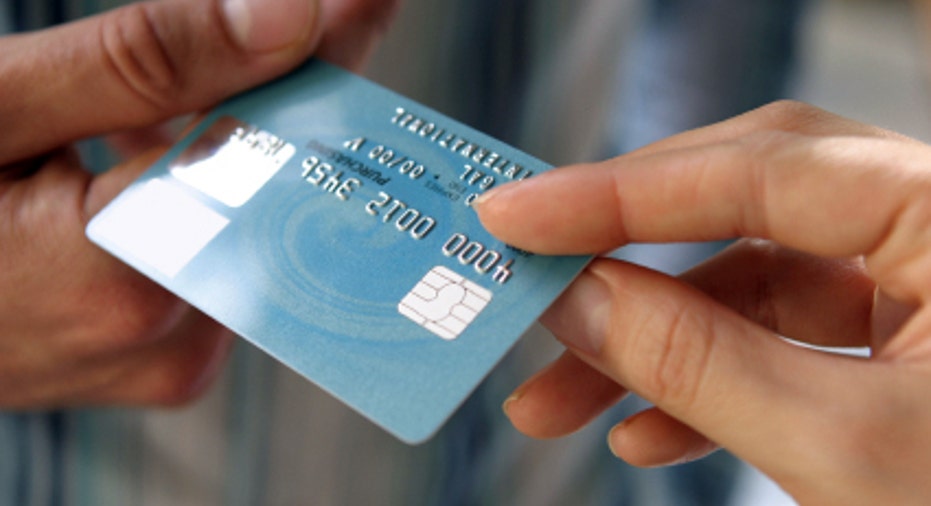Follow the Money: What Happens When You Swipe Your Card

Credit cards aren't magic, but they can seem like it. After all, one minute, you have nothing in your hands, and then the next, simply by waving a piece of plastic (which might as well be a wand), presto! you suddenly own something you didn't previously have.
And for many shoppers, the way credit cards make your money move around might as well be magic. Like television, airplane flight, the Internet -- we tend not to think much about how things work. We just care that they do.
"It is kind of a mystery," says John Ulzheimer, president of consumer education at SmartCredit.com. Ulzheimer should know exactly how credit card processing works, as he has over 20 years' experience working in the consumer credit industry, including high profile positions at Equifax and FICO. But even this credit card guru admits that he can get stymied when people ask him to explain the process.
"You'd think that there are only three parties involved in credit card processing -- you, the merchant and the bank, but it's much more complicated than that," Ulzheimer says.
In large part, he adds, that's because not every credit card issuer processes payments in the exact same way.
But the information is out there, and so if you're the sort who likes to know how the rabbit got in the hat, or how the woman was sawed in half, here's what happens when you swipe your card.
1. The purchase
When you swipe or wave or tap your card at a checkout counter, the store's credit card reader forwards the card information to the acquirer (a bank that makes payments on your behalf), which then relays the message to your credit card issuer (a company that holds your credit card account information). If the issuer says you have enough credit to make the purchase, an approval is then transmitted back to the acquirer, which then sends back an approval to the store. You sign for your purchase, and you're on your merry way.
Unless, of course, the signal came back that your card was denied, which is how you then end up red-faced and explaining to the clerk that you were sure you had enough funds in there. Maybe they could try again?
Either way, this process, which involves you, the acquirer and the credit card issuer, takes just seconds if things are running smoothly.
2. The waiting game
You walk out of the store with your new purchase in hand, but the store doesn't have its money yet. Phil Zimmerly, owner of the Common Grounds Coffeehouse & Cafe in Bluffton, Ohio, explains that his credit card reader "authorizes, stores the information and then processes it in the middle of the night."
The storing of credit card sales is called batching. Says Zimmerly: "We get the customers' money two days later, typically."
This is one reason online retailing has been a pleasant boon for entrepreneurs. They often can get their money from credit card processing before sending the product out.
3. The clearing process
A lot is going on during what's called the clearing process. All of the information that was collected during the purchase goes to the acquirer, which in turn shuttles that information to the card network, also called the credit card association.
What's a card network? Do the names MasterCard and Visa ring a bell? The card network is the go-between the acquirer and the credit card issuer. American Express and Discover are also card networks, and here's where it can get really confusing, since American Express and Discover are also credit card issuers, but MasterCard and Visa are not.
Anyway, the card network sends your purchase data to your credit card issuer, a financial institution like Chase, Citi, or, yes, American Express or Discover. The issuer will then typically subtract its interchange fee and share part of that fee with the credit card network.
Afterward, the network sends this financial data (think: money) back to the acquirer. The acquirer then takes its portion of your transaction, called a discount fee.
4. Closing the loop
But the bottom line is that after the clearing process, comes the funding process, in which the business owner receives his or her money, and you the consumer, who have moved on to new shopping experiences, have now officially paid the retailer, if not your credit card issuer, for that purchase you made a couple of days ago.
In the case of Common Grounds, which handles a large number of relatively small transactions (their Sunday special currently features a $2.50 bottomless cup of coffee), the fee process is a little different. Zimmerly says, ""We pay miscellaneous fees once per month, which includes different processing fees and card swipe fees." Of credit card processing, he admits, "Some parts we still don't understand."
Confused? Visa provides a visual explanation of credit card processing on their website, in "The life of a Visa transaction."
"Credit cards are a bit unpredictable on how much we will be charged each month," acknowledges Zimmerly, "but on the plus side, we feel that credit card sales are a big asset to our business."
And consumers presumably feel that credit cards are an asset to their buying power. In America alone, according to the U.S. Census Bureau, there were an estimated 181 million credit card users in 2010. That's a lot of approving, batching and clearing going on all at once. It may not all rival the magic of a 747 lifting off the ground and soaring 40,000 feet into the air, but it's still pretty impressive.
The original article can be found at CardRatings.com:Follow the money: what happens when you swipe your card